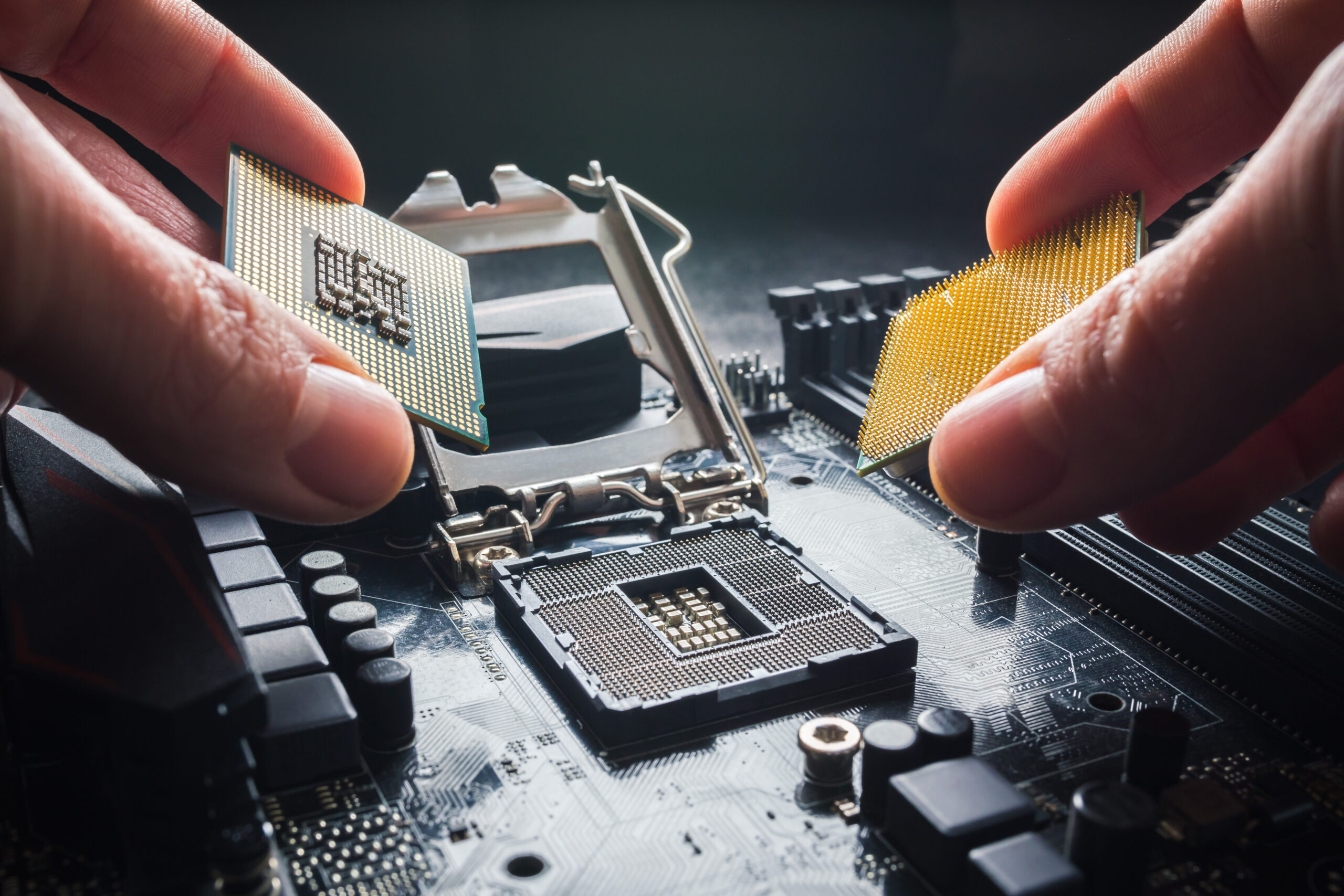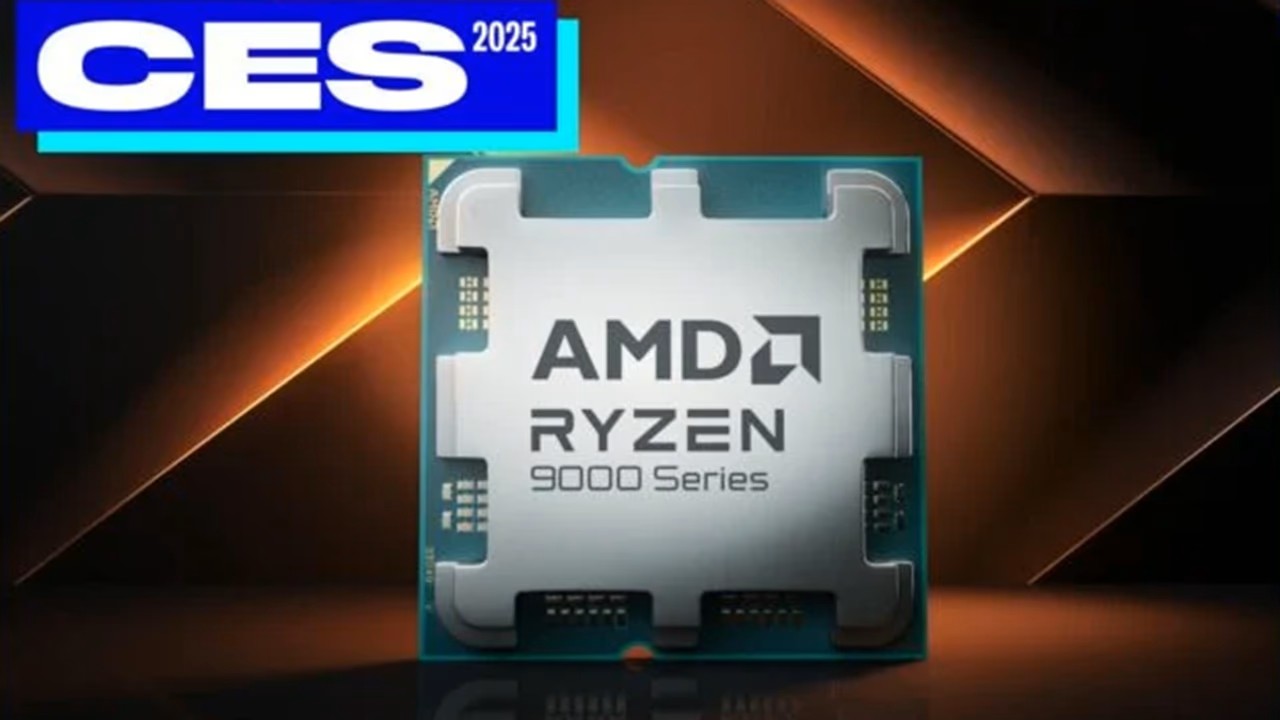The new CPU announced by AMD.

TEXT : Shaun Taylor
On January 7, 2025, AMD delivered a keynote at the Consumer Electronics Show (CES), where several new gaming-oriented CPUs were announced. According to Kyle Barr of Gizmodo, this year AMD is targeting the high-end gaming PC market with its powerful Zen 5 generation Ryzen 9 X3D chips, while competing with NVIDIA’s mid-range GPU products with the RDNA 4-based Radeon RX 9700 series. As for how AMD will compete with NVIDIA in the high-end GPU space, it seems we’ll have to wait a little longer for more information.
The newly announced main CPUs are the Ryzen 9 9900X3D and 9950X3D. The former features 12 cores and 24 threads, with a maximum boost of 5.5GHz and 140MB of cache. The latter, which is the new top-tier consumer CPU, comes with 16 cores and 32 threads, a frequency of 5.7GHz, and 144MB of cache.
Additionally, the new laptop chip, the Ryzen 9 9955HX3D, is worth noting. It shares the same number of cores, threads, and TDP as the high-end desktop CPUs.

The Ryzen 9 9950X3D has been significantly improved from the Zen 4 generation, and it is expected to offer over a 20% increase in in-game performance compared to the Ryzen 9 7950X3D in games like Hogwarts Legacy and Warhammer 40,000: Space Marine 2. However, in titles like Black Myth: Wukong and Cyberpunk 2077, the performance difference between the two chips seems to be less significant. In productivity benchmarks, the gap is more noticeable, with a 13% improvement in Geekbench 6 and a 16% increase in Cinebench 2024 scores.
On the other hand, Intel's latest Arrow Lake desktop chips appear to struggle in gaming performance when compared to the 14th generation CPUs. According to AMD's provided benchmarks, the Intel Core Ultra 285K is outperformed to varying degrees, with AMD claiming up to a 41% higher frame rate in Final Fantasy XIV and up to 45% higher in FarCry 6. However, Intel has also just released a new version of its Arrow Lake architecture under the Core Ultra H-/HX-series, so more rigorous comparisons are awaited in the future.
AMD's Ryzen Z1 is a popular RDNA 3 chip for handheld devices, but the company has already revealed that the next-generation Ryzen Z2 will be coming soon.
The flagship Z2 Extreme still relies on RDNA 3 and features 8 cores, 16 threads, and a maximum frequency of 5GHz. Compared to the standard Z2 (with a 15-30W TDP), the Z2 Extreme supports a TDP range of 15-35W and, as suggested by its "Extreme" name, it will come with a total of 16 graphic cores. Additionally, a lighter Z2 Go chip with 4 cores, 8 threads, and a maximum boost of 4.3GHz will also be available, potentially featured in Lenovo's handheld PC, the Legion Go S.
AMD has hinted that Lenovo’s Legion Go, Asus’s ROG Ally, and even Valve’s Steam Deck might adopt the Z2 Extreme by 2025. The current Steam Deck uses a custom Zen 2-based chip, so it will be interesting to see how it transitions to the next generation.
The two newly announced desktop chips are set to arrive in the first quarter of 2025. The notebook version, the HX3D, is only mentioned for the first half of 2025, meaning it will likely take some time before gaming laptops featuring these chips hit the market.

As part of a new lineup for consumer desktop GPUs, the Radeon RX 9070 and 9070 XT will be launched. The product names are intentionally similar to NVIDIA's latest models, reflecting AMD’s intention to compete with the RTX 4070, while also aligning with the naming convention of its high-end CPUs.
The first RDNA 4-based AMD Radeon is said to deliver improvements in ray tracing and AI processing performance, and it has been confirmed that it will be manufactured using a 4nm process, rather than the previously rumored 3nm.
Additionally, AMD has announced plans to update its AI upscaler from FSR 3.5 to FSR 4, with expectations for improved 4K upscaling quality.
